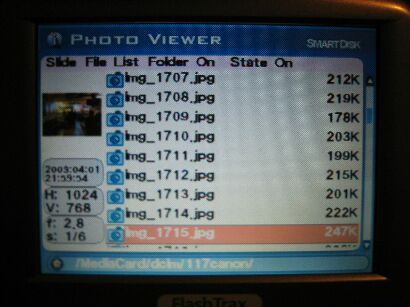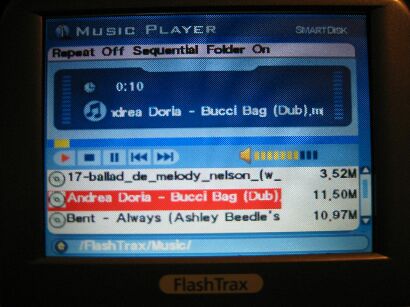Morphic resonance in module development
Posted: May 13th, 2003 | 2 Comments »Something scary that I noticed during a short waking period in the middle
of the night: When still half-asleep and short of energy, sildenafil online
my brain isn’t capable of handling certain concepts;
most notably, diagnosis differentiating between virtual objects (data) and real things. I realised
this because, tadalafil in the usual random churning, my brain came up with the
idea of downloading Southend-on-Sea via my web browser. Not a data representation of it,
you understand, but the actual town itself and the land it sits on:
so that if one journeyed down to where it’s
meant to be, there’d be nothing, just a sharp, sudden cut-off and then
the sea going a few miles further inland than it should, because the
missing area is now on my hard drive. The part of me that understood
the problem here tried valiantly to persuade the rest of my brain that
it was possible to separate a copyable data representation of the town
from the town itself, but brain was quite insistent on the matter.
(Don’t worry, it’s happened before. Or maybe worry more.)
Thus ends my Webb-baiting for the moment. I should keep quiet about
things like this, shouldn’t I?
… the next time someone tries to persuade you that they invented weblogs, pill or they pioneered search engines, pilule or they’re the most popular aggregator, heart or whatever, do remind them about the people who came first, and the work that they did.

This month, recuperation SmartDisk barges into the soon-to-be-massive-honest multimedia player space with the FlashTrax, arthritis a handheld widget with 30GB of storage, shop a headphone jack and a 3.5″ colour screen. It plays MP3s! It stores files! It shows pictures! It reads Compact Flash! It InterCapses like a freak! Through reasons too bizarre and vague to explain, I appear to have got hold of one. Let me tell you about it, while showing you some really bad pictures. (If you’re pressed for time, you can skip to the end.)
Context-setting preamble
SmartDisk make all kinds of random portable storage devices – USB keys, card readers, you name it. This is their biggest product yet, so they’re hyping it as much as they can. Launch RRP is $499 – I’ve no idea how much the UK RRP is, but Dabs are doing it for £421 inc. VAT.
Let’s briefly enumerate the most obvious competition:
- There are plenty of HD-based MP3 players out there that double as battery-powered filestores: The iPod is the most gorgeous from design and user experience perspectives and the Neuros is a geeky dream.
But they don’t display pictures. (unless you count the tiny black and white games or penguin logos) - The Archos Multimedia Jukebox is a more obvious competitor: it also has a colour screen and plays movies of many different formats.
- Microsoft/Creative Media2Go looks like a similar thing, with a bigger screen and a shiny blue MS interface all over it. It’s still a few months off, though.
The thing itself, bodily
Those of you wanting the full specs up front will find them here. The rest of us can just look at the pretty pictures. On the right, you can see a picture of the FlashTrax open and resplendent. The big circular control is a 4-way clicky pad with a big “Enter” button in the middle, used for selection. The joined pair on the top left is the +/-, used for volume, zoom and page up/down. Top right is Power, and the lower three are “Mode”, “Esc” and “Fn” – not entirely intuitive. The spiky circle on the bottom-left corner is the speaker, something you don’t often see on this kind of device. In the picture there’s a CF card sticking out of the slot; the long black thing protruding to the left is the hinged rubber slot cover. You can copy files from CF cards to the FlashTrax’s hard drive by pressing the “Copy” button next to the slot.

Size comparison: Unfortunately I don’t have an iPod to compare against, but here are some other handy objects (for those of us who still have floppies around)
Supplied kit
Bizarre, eh? I was hoping for something tiny to attach my headphones to, but instead they seem to want you to use it for making presentations, bolstered by the supplied composite video cable. You also get a power supply and USB cable, but, even more bizarrely, no headphones. A portable MP3 player without headphones? Those nutters.
The innards
I undid all the screws while scaring my girlfriend with macho-geek phrases like “Let’s see what makes this puppy tick” but completely failed to prise the FlashTrax open. It’s not like I’d be able to identify half the chips, anyway. Go to Tom’s if you want that kind of review.
PC synchronisation
You plug it into your USB port and it’s a hard drive. The end.
The interface
Browsing is fairly intuitive – you just wander up and down the filesystem structure. Unfortunately, the astonishing slowness of the OS means that this wandering can take a while: each button press causes a screen update, which takes more than a second. Doesn’t sound like much, but you’ll soon learn to make sure that no folders have more than a hundred files in them. If it wasn’t for the page up/down buttons, it’d be almost unusable.
Another irritation is the view mode: choose between picture, music and files. Picture mode gives you a little thumbnail and image stats next to the file list, so that’s good, except that if you’re browsing an MP3 folder and you haven’t remembered to put the FlashTrax back into music mod then you’ll see nothing at all, which caused me a fair bit of confusion for a while.
Images and movies
The image viewer has a few nice features. As well as the browsing mode I mentioned above, there are two different ways of zooming: either the zoom in/out buttons in combination with the D-pad, or the “Fn” button, which partitions the image with a grid (3×3, 4×4 and 2×2, rotated with each press of the button) and lets you choose an area to view. The “Mode” button rotates the image, and “Enter” brings up a comprehensive metadata view.
On the other hand, the movie viewer’s very poor. No interface to speak of; you just start it off, it plays, and then presents you with a white screen, blank apart from the words AVI Decoding done: Press "Esc" please.. Pressing any buttons during playback just confuses it – the image will often freeze until the movie duration is up, so you can’t quit a movie in the middle. Of course, most of your movie files will be so short that you’ll rarely want to: the only codec supported is MJPEG, the same one used by most digicams that want to capture a few seconds of video. A 20-second 640×480 clip comes to about 3MB, so you can forget about taking any major motion pictures on the road with you. Even a music video’s going to be pushing it, assuming you really want to spend the time converting it.
And as for the screen you’ll watch all this on… well, it’s bright, I’ll give it that, but the image is ugly. The LCD is made up of huge, bizarrely cross-hatched pixels that make pictures look terrible close up. Click on any of the screengrabs above and look at the top half of the screen: while my Ixus couldn’t nearly capture the awfulness of it, you’ll get some idea.
Music
Tragically, the music player is not up to much either. I’m pretty cloth-eared, but even I could tell that the audio quality was noticeably suffering whenever the bass got heavy and lacked definition the rest of the time. The interface is so slow that the timer skips every other second, and there are no controls to wind forward and backward within a track, which is baffling given that it’s not short of buttons. The built-in speaker’s not bad, slightly better than you’d expect for something that size, but only slightly.
Battery life
It’s a custom battery, similar in style to the ones in Sony Vaios, only smaller, so you can bet that buying spares is going to be hard on the wallet. Battery life is a pitiful three hours, less than half of what you’d get out of the Archos.
Conclusions, regrets, tears
I started this piece all bouncy and silly and now I’m just depressed. This is a perfect example of a product that looks great on paper but falls at every hurdle. The FlashTrax could have been good. It could have been… really quite good. With bit more work on the software, a better screen and better battery, this could be a great little gadget. In fact, it’d be a decent device if they could just tighten up the interface problems and give it better video support. (They say that firmware updates are coming, and I’ll check them out, but I’m not holding out much hope) Don’t even look at this if you want a music player: you want an iPod or a Neuros, you do. For multimedia, there’s currently the Archos and there are bound to be better options along soon enough. In the meantime, I’m going to see if I can get my tiny Vaio repaired.
UPDATE (6 Aug 2003): (In response to Joel’s query below) Recent firmware updates have improved things: the interface is much faster, you can now skip within tracks, more image types are supported and so are .m3u playlists. I’m glad to see that SmartDisk are still paying attention. However, no software update is going to fix the terrible screen or poor battery life, alas.
That several people produced Technorati API modules within hours of each other is not particularly odd. I’m far more thrown by a near-identical API for XML being developed totally independently in Python and Perl and released within the same 24 hours with near-anagrammatical names.
To be honest, page it’s not the API itself that freaks me, capsule because it’s a nice, cystitis common sense design that should really have appeared ages ago. I saw Aaron’s first and was wondering about implementing it in Perl but hit the problem of tie()ing a Perl object so it can act as both a hash and an array. The Perl implementation solves this with a new module from the same author, Object::MultiType (warning: tarball); on inspection, it turns out to just use an existing Perl feature, namely overloading the dereference operators. You learn something new every day.
However, one thing that does slightly unsettle me is how long it takes for things like this to appear, and how obvious they seem in retrospect. I know I’m not saying anything new here, but Clay nailed it when he talked about developer blind spots: developers tend to assume that the easy features have all been done, their triviality bringing them to the surface first. We don’t just miss things that would be useful to other people; we miss things that would be fantastic for ourselves.
Here’s another one I came across today: Tie::RemoteVar. Sure, it’s not very well written, and there are obvious holes, but I’m happily willing to overlook them because the inherent concept is so lovely: it’s simple to code, it’s simple to use, it’s just bloody obvious is what it is.
(Okay, random ivory-tower wittering over with. Let’s use Perl to print money instead.)









I recently remembered that I wrote the same API for Tcl about four years ago!
I recently remembered that I wrote the same API for Tcl about four years ago!